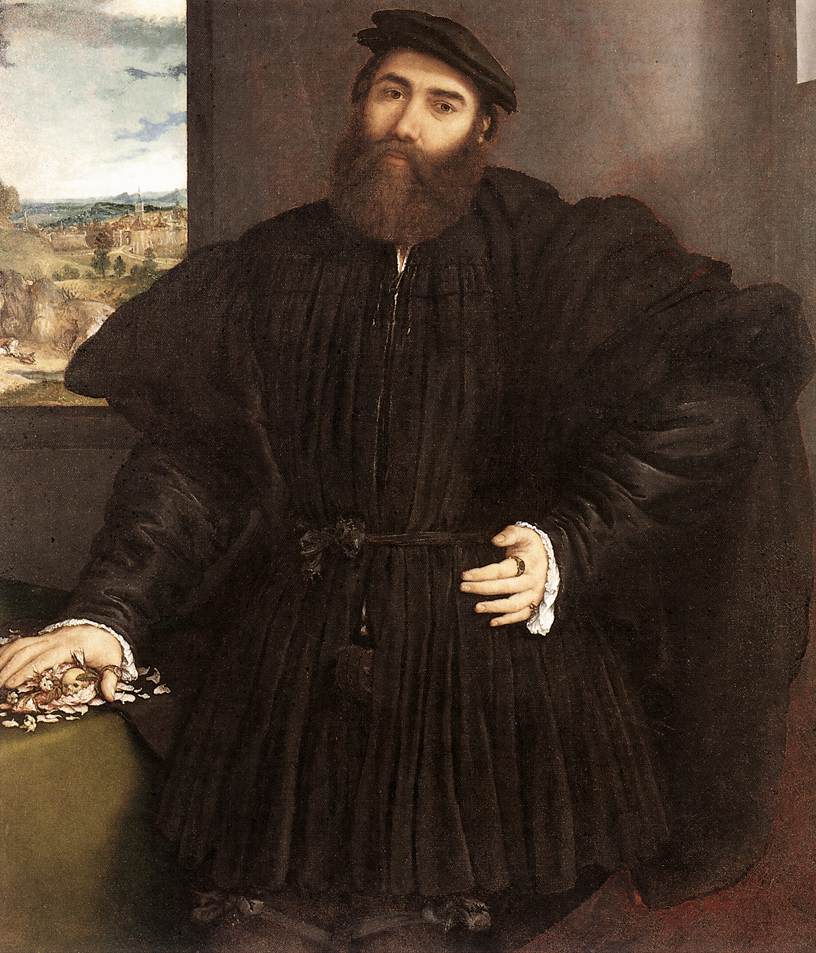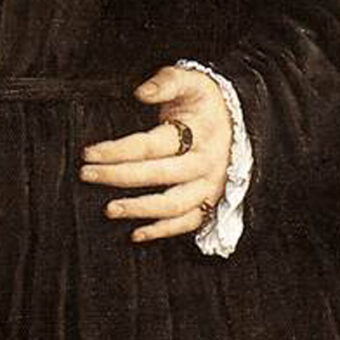Have you ever heard about the Borghese Gallery? It’s a gem immersed in the homonymous Villa, not too far from the city centre? If not, we should absolutely go together as soon as tours will be again allowed in there. I was lucky enough to conduct a couple of visits before the lock-down. I must confess: every time I go there I feel reinvigorated. Perhaps because it is never too crowded, or it might depend on the large amount of excellent art works on display. The hundreds of masterpieces require more than just the two-hour slot available for the tour. A careful selection of what to see is a must to enjoy your visit.
That’s why I would like to take a chance here to tell you about one of my favorite works. Maybe you’re thinking of Bernini or Caravaggio, even of Titian. Certainly these are top notch in the collection; yet, there’s more precious gems you should not miss.
One of them is definitely the Portrait of a Gentleman by Lorenzo Lotto (around 1535). He’s certainly one of the most talented artists from the Veneto area. Many art historians have praised for his psychological introspection skills. I’ll be honest, I’m not a big fan of portraits, even though I am particularly charmed by this one.

The imposing figure of Mercurio Bua wearing a pitch black dress stands next to a table. The brighter background compared to the man’s suit is pierced by window with a lively colored landscape. There is a fortified city (perhaps Treviso) and in the lower left corner Saint George on horseback killing the dragon, a subtle detail that points to Bua’s military career.
I like lingering on many details, for example the two wedding bands worn on the left pinky: it’s a very well known custom for me, because it is still widespread in my family. The left hand stands on the spleen, where the melancholy mood was believed to reside. The right hand rests on a table gently pressing some roses and jasmine petals, both symbols of love. However, here’s a disturbing detail that you don’t expect: a small skull is peaking from the fragmented flowers.


All these, in addition to the man’s suffering expression (glazed look, half-open mouth), lead to a mourning condition: the loss of his wife, Caterina Boccali, in 1524.
Yeah, but who was he? Maurizio Bua (who once he had moved to Venice changed his name to Mercurio ) descended from a noble Albanian family. He undertook a brilliant military career, succeeding in many conflicts; after all in such a period he lived in, the XIV century, wars were certainly not lacking! What we know about him was handed down by one of his descendants, who might have probably glossed over most atrocious acts of massacres and beheadings towards his enemies.
But let’s get back to our love story. In the second decade of XIV century Mercurio marries Caterina, daughter of a mercenary, Niccolò Boccali. He has also hit the top of his military career. Unfortunately, marriage will not last too long, because she will die under unknown circumstances in 1524.
So, here is a couple of questions coming to my mind. The portrait should date back to 1535, due to stylistic analogies; however, we know that Mercurio will mend his broken heart just a year after Caterina’s death , 1525. He will in fact marry Elisabetta Balbi, whom he will have 4 children with. So why waiting for so long to be portrayed as a widower? Maybe because you can never forget your first love? Or because the man portrayed is not actually Mercurio Bua but someone else named Giorgio (As nobles and important figures would have their portrait accompanied by the depiction of the saint bearing their same name)?
There’s still no answer to my questions. The only certainty is about the wealth of details and the lively yet suffering expression of the man. It really makes me think of true love triumphing over death.